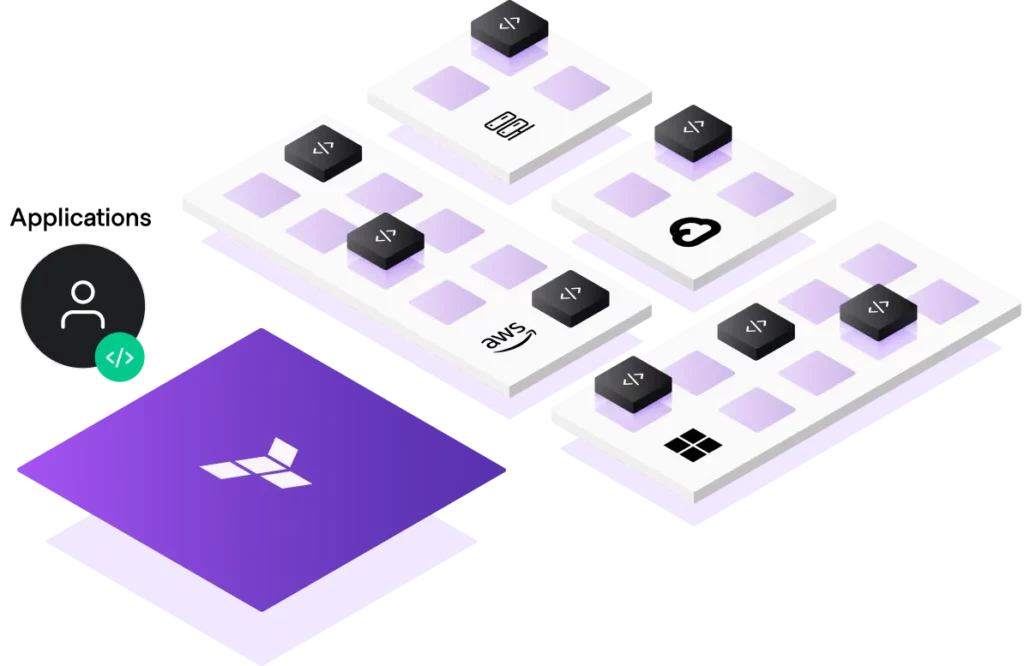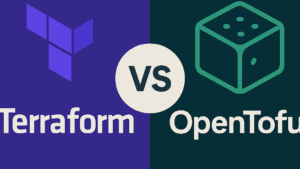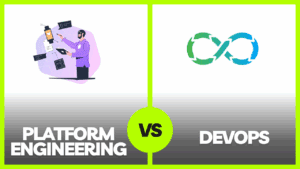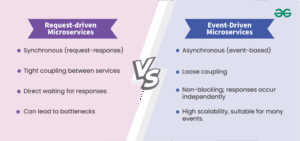In today’s rapidly evolving digital landscape, companies are constantly seeking efficient and cost-effective solutions to manage their infrastructure. This is where Terraform, a powerful Infrastructure as Code (IAC) tool, comes into play. By enabling organizations to define, provision, and manage their infrastructure through code, Terraform eliminates manual and error-prone processes, ultimately reducing costs and increasing productivity. In this article, we will explore the benefits of implementing Terraform as a cost-effective solution for infrastructure management. If you are looking for expert guidance in this area, SlickFinch is here to assist you in optimizing your infrastructure with Terraform. Contact us today to learn more about how we can help you streamline your operations and achieve significant cost savings.

I. Introduction
In today’s technology-driven world, the demand for efficient and cost-effective infrastructure management continues to grow. This has led to the emergence of Infrastructure as Code (IaC) solutions, which allow organizations to manage their infrastructure resources using code. One such powerful tool is Terraform, which has gained immense popularity in recent years due to its versatility and effectiveness. In this article, we will explore the concept of Infrastructure as Code, understand the benefits it offers, and delve into the role of Terraform in enabling cost-effective infrastructure management.
II. Understanding Infrastructure as Code
A. Definition
Infrastructure as Code (IaC) refers to the practice of managing infrastructure resources in a declarative and programmatic manner using code. Instead of manually configuring and managing infrastructure components, IaC allows for automating these tasks through code. By treating infrastructure as code, organizations can achieve better scalability, agility, and reliability.
B. Benefits
The adoption of Infrastructure as Code offers several key benefits. Firstly, it allows for the automated provisioning and configuration of infrastructure resources, reducing the chances of human error and increasing efficiency. Secondly, IaC enables version control, making it easier to track and manage changes to infrastructure configurations. Lastly, infrastructure deployments can be easily replicated and shared across different environments, leading to improved consistency and standardization.
C. Role of Terraform
Terraform, developed by HashiCorp, is a widely used open-source tool for building, changing, and managing infrastructure resources. It provides a declarative syntax for defining infrastructure as code and supports various cloud providers, such as AWS, Azure, and Google Cloud Platform. Terraform enables organizations to create and manage infrastructure resources efficiently, while also allowing for easy collaboration and scalability.
III. Cost Effectiveness of Infrastructure as Code
A. Reduced Hardware Costs
One of the significant advantages of implementing Infrastructure as Code is the reduction in hardware costs. Traditional infrastructure management often requires organizations to invest in dedicated hardware for each application or service. With IaC, resources can be provisioned dynamically based on demand, eliminating the need for excessive hardware investment.
B. Lower Infrastructure Management Costs
By automating infrastructure management through code, organizations can significantly reduce operational costs associated with manual configuration and management. IaC solutions like Terraform enable easier provisioning, scaling, and monitoring of infrastructure resources, leading to more efficient resource utilization and cost savings.
C. Efficient Resource Allocation
Infrastructure as Code provides organizations with the ability to allocate resources based on specific needs and requirements. With Terraform, resources can be provisioned on-demand, allowing for efficient scaling to meet workload demands. This granular control over resource allocation ensures that organizations only pay for the resources they actually use, resulting in cost optimization.

IV. Introduction to Terraform
A. Definition
Terraform is an Infrastructure as Code tool that enables organizations to define and provision infrastructure resources through code. It follows a declarative approach, where infrastructure configurations are described in a human-readable language, known as HashiCorp Configuration Language (HCL). Terraform then translates these configurations into a plan and applies it to create or modify the desired infrastructure resources.
B. Key Features
Terraform offers several key features that make it a preferred choice for Infrastructure as Code solutions. Firstly, it provides a wide range of providers, allowing organizations to manage infrastructure resources across multiple cloud platforms, on-premises environments, and third-party services. Secondly, Terraform embraces infrastructure lifecycle management, enabling the creation, modification, and deletion of resources while maintaining the desired state. Lastly, its modular approach allows for code reuse and easy collaboration among teams.
C. Terraform Providers
Terraform supports a vast ecosystem of providers, which are used to interact with various cloud platforms and services. These providers extend the functionality of Terraform, enabling organizations to manage a wide range of resources, such as virtual machines, databases, networking components, and more. Some popular Terraform providers include AWS, Azure, Google Cloud Platform, and VMware. The availability of numerous providers makes Terraform a versatile tool for managing infrastructure in multi-cloud or hybrid environments.
V. Cost Effective Solutions with Terraform
A. Infrastructure Provisioning
Terraform simplifies the process of provisioning infrastructure resources by allowing organizations to define their desired state through code. By utilizing its declarative syntax, infrastructure resources can be created, modified, or destroyed in a controlled and automated manner. This streamlined provisioning process eliminates the need for manual intervention, reducing costs and ensuring consistent infrastructure deployments.
B. Scalability and Elasticity
With Terraform, organizations can effortlessly scale their infrastructure resources based on demand. By specifying the desired number of instances or resources in the code, Terraform can automatically provision additional resources when required. This elasticity ensures that organizations never pay for unused or idle resources, optimizing costs while maintaining performance.
C. Automation and Standardization
By adopting Terraform for Infrastructure as Code, organizations can automate repetitive infrastructure management tasks. This automation reduces the chances of human error, increases efficiency, and enables faster deployments. Additionally, Terraform promotes standardization by allowing organizations to define reusable modules, enforcing consistency in infrastructure configurations, and saving valuable time and effort.
D. Infrastructure Monitoring
Terraform provides integrations with various monitoring and observability tools, allowing organizations to effectively monitor their infrastructure resources. By gaining insights into resource utilization, performance metrics, and potential bottlenecks, organizations can make informed decisions to optimize their infrastructure and reduce unnecessary costs.
E. Disaster Recovery
Terraform simplifies disaster recovery by automating the process of recreating infrastructure resources in the event of a failure or disruption. By defining recovery plans as code, organizations can replicate their infrastructure configurations and swiftly recover from any unforeseen incidents. This not only reduces potential downtime but also minimizes the financial impact of such events.
VI. Best Practices for Cost Effective Infrastructure as Code with Terraform
A. Planning and Designing Infrastructure
Before implementing Terraform for Infrastructure as Code, it is essential to invest time in planning and designing the infrastructure architecture. By carefully identifying the required resources, anticipated workloads, and scalability needs, organizations can optimize cost-efficiency. This proactive approach ensures that infrastructure resources are provisioned in a manner that aligns with business objectives and minimizes unnecessary expenses.
B. Implementing Infrastructure as Code
When implementing Infrastructure as Code with Terraform, it is crucial to follow development best practices. This includes leveraging version control systems, automating testing processes, and conducting thorough code reviews. By maintaining a clean and well-organized codebase, organizations can ensure reliable and efficient management of their infrastructure resources while minimizing the risk of costly mistakes.
C. Continuous Optimization and Cost Management
Cost-effective infrastructure management does not end after the initial deployment. It is essential to continuously monitor and optimize resource utilization, identify potential cost-saving opportunities, and make adjustments as needed. By regularly reviewing infrastructure configurations and removing unused or underutilized resources, organizations can maximize efficiency and minimize expenses over time.
D. Utilizing Terraform Modules and Templates
Terraform provides the ability to create reusable modules and templates, enabling efficient code reuse and collaboration. By leveraging pre-defined modules or creating custom ones, organizations can streamline the process of infrastructure provisioning, reduce duplication, and ensure consistent configurations. This modular approach not only saves time and effort but also promotes cost-effective infrastructure management.
VII. Case Studies: Real-world Examples of Cost Effective Solutions with Terraform
A. Company A: Optimizing Cloud Resources
Company A, a fast-growing technology startup, faced significant challenges in managing their cloud infrastructure costs. By implementing Infrastructure as Code with Terraform, they were able to automate the provisioning and monitoring of their infrastructure resources. Terraform’s scalability and elasticity ensured the optimal allocation of resources, leading to a 30% reduction in their monthly cloud expenses. SlickFinch’s expertise in cost-effective infrastructure management with Terraform played a crucial role in helping Company A achieve these substantial cost savings.
B. Company B: Streamlining Development Environments
Company B, a software development firm, struggled with maintaining consistent and standardized development environments across their teams. With the help of Terraform, they implemented Infrastructure as Code, enabling the automated provisioning and configuration of development resources. This standardization reduced overhead costs associated with manual environment setup and ensured faster and more reliable development cycles. SlickFinch’s expertise in implementing infrastructure standardization with Terraform proved invaluable in helping Company B achieve these cost-effective and efficient solutions.
C. Company C: Reducing Infrastructure Downtime
Company C, a large enterprise, faced frequent infrastructure downtime due to manual configuration errors and lack of disaster recovery plans. By adopting Terraform for Infrastructure as Code, they automated the provisioning of their infrastructure and incorporated disaster recovery strategies into their infrastructure configurations. This resulted in a significant reduction in infrastructure downtime and associated financial losses. SlickFinch’s expertise in disaster recovery planning and Terraform implementation played a crucial role in helping Company C achieve these cost-effective and resilient infrastructure solutions.
VIII. Comparison with Other Infrastructure as Code Tools
A. Ansible
Ansible is another popular Infrastructure as Code tool that focuses on automation and configuration management. While both Ansible and Terraform can be used for infrastructure provisioning and management, they have different strengths. Ansible excels at application deployment and configuration management, while Terraform’s primary focus is on infrastructure provisioning and resource management. Both tools have their unique features and use cases, and SlickFinch’s experts can provide guidance on which tool is most suitable for specific infrastructure needs.
B. Puppet
Puppet is another widely used Infrastructure as Code tool that emphasizes configuration management and automation. Similar to Ansible, Puppet and Terraform have different areas of expertise. Puppet is well-suited for managing the configuration of individual systems, while Terraform excels at managing infrastructure resources across multiple systems. SlickFinch’s experts can provide detailed insights into the strengths and limitations of each tool, helping organizations make informed decisions when choosing between Puppet and Terraform.
C. Chef
Chef is yet another popular Infrastructure as Code tool that focuses on automation and configuration management. Like Ansible and Puppet, Chef offers robust configuration management capabilities. However, Chef’s primary focus is on managing the configuration and state of individual systems, while Terraform specializes in provisioning and managing infrastructure resources. Depending on specific infrastructure requirements, SlickFinch’s experts can guide organizations on selecting the most suitable tool for their needs.
IX. Challenges of Cost Effective Infrastructure as Code with Terraform
A. Learning Curve and Resource Constraints
Implementing cost-effective Infrastructure as Code solutions with Terraform can present challenges for organizations. The learning curve associated with Terraform’s syntax and concepts may require time and resources for knowledge acquisition. Additionally, resource constraints, such as limited in-house expertise and time constraints, may hinder the effective adoption of Terraform. In such cases, seeking expert assistance from SlickFinch can help organizations overcome these challenges and leverage the full potential of Terraform for cost-effective infrastructure management.
B. Compliance and Security Risks
When implementing Infrastructure as Code with Terraform, organizations must ensure compliance with security standards and best practices. Failure to address security risks and incorporate necessary controls can lead to potential data breaches and financial loss. At SlickFinch, our experts possess extensive experience in implementing secure infrastructure solutions with Terraform, ensuring compliance with industry regulations and minimizing security risks.
XI. Contact SlickFinch for Expert Assistance
In conclusion, Infrastructure as Code solutions, such as Terraform, offer organizations numerous cost-effective benefits, including reduced hardware costs, lower infrastructure management costs, and efficient resource allocation. Terraform, with its extensive features and support for multiple cloud providers, enables organizations to achieve cost optimization through efficient provisioning, scalability, automation, and disaster recovery. However, the implementation of cost-effective Infrastructure as Code solutions with Terraform can present challenges, such as learning curves and security risks. For expert guidance and assistance in achieving cost-effective infrastructure management with Terraform, organizations can turn to SlickFinch. Contact SlickFinch today to leverage their expertise in the field and unlock the full potential of cost-effective Infrastructure as Code with Terraform.




